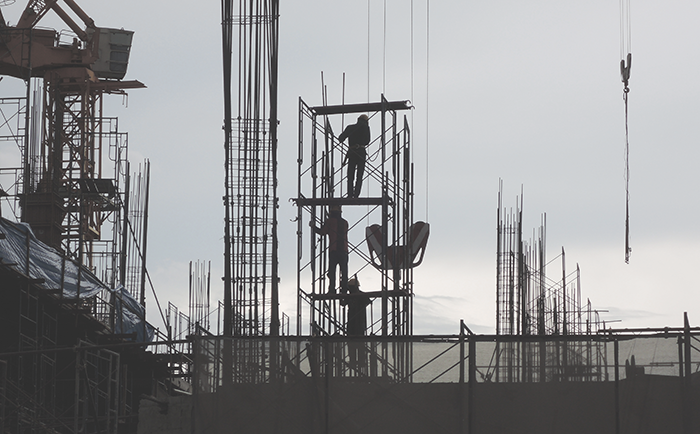At Latham we’ve had the good fortune of having all of our stair and flooring product manufacturing needs met by Australian workers. However, some organisations in the construction and manufacturing industries don't have the same luxury.
The COVID-19 pandemic has put an unprecedented economic strain on Australian businesses, and resulted in significant budget constraints. At the same time, a boom in construction projects means many in the construction and manufacturing sector are grappling with vast skills shortages.
In such instances often the only option is hiring overseas building contractors to tap into a wider pool of skilled talent.
It’s no secret that construction is a highly regulated sector, operating in a complex legal, bureaucratic and political environment with a range of laws, building codes, industry standards and stakeholders to take into account. The challenge of hiring overseas building contractors is no exception to this complexity - and a pressing consideration for the industry.
What’s more, there are a whole new series of factors to take into account given the tightening of visa requirements for the 482 visa, as well as the ongoing border restrictions and flight caps for inbound travellers as a result of COVID-19. These changes tighten the controls and limit visa eligibility to a handful of occupations, and may lead to delays in processing or relocation times.
To help ensure that you meet any hiring needs for overseas contractors without harming your budget, project timeline, site safety and of course client satisfaction, we’ve broken down three factors to simplify the process of hiring construction contractors: legal considerations, timing and safety factors.
3 factors to consider when hiring overseas contractors in Australia
1. Legality
Over the past decade, the Australian Government has made a number of changes to the laws surrounding overseas contractors, with the goal to incentivise Australian businesses to prioritise local workers. Any businesses that want to hire overseas contractors must do so under a Temporary Skill Shortage (TSS) visa (subclass 482).
This visa allows employers to address labour shortages by bringing in skilled workers where they can’t source an appropriately skilled Australian worker.
As a result, project managers can now only hire overseas contractors who have skills considered by the government to be in “short supply” in Australia. These are broken down into the following categories:
- the short-term stream, which allows workers to stay up to 2 years (or 4 if an International Trade Obligation applies). Workers need to be nominated to work in an occupation on the list of eligible short-term skilled occupation list.
- the medium-term and long-term stream, which allows workers to stay up to 4 years. The occupation needs to be on either the Medium and Long-term Strategic Skills List (MLTSSL) or the Regional Occupation List (ROL).
- the labour agreement stream, for employers who have a labour agreement with the Australian Government. Workers can stay for a maximum of 4 years under this stream.
Other changes to look out for in TSS visa include:
- candidates need to have at least 2 years of relevant work experience in the nominated occupation
- applicants must speak fluent English and meet the minimum standards of English language proficiency
- the applicant must meet health and character requirements
- candidates need to be nominated by an approved sponsor
Additional criteria may apply, depending on which role you are looking to fill. Visit the Department of Home Affairs website for more on the specific criteria for the different TSS visa categories.
2. Timing
Given the key importance of maintaining a smooth delivery and meeting client expectations and deadlines, timing is an especially crucial factor to keep in mind.
In addition to the length of time it takes to actually put together a visa application with all the associated paperwork, you should consider the 482 visa processing time. According to the Australian Government, 75% of all short-term TSS visa applications are processed within 84 days and 90% are processed within 4 months. Meanwhile, for medium-term TSS visa applications, 75% are processed within 3 and 90% within 5 months. These processing times are likely to be further delayed by COVID-19.
Another important factor to consider for your project timeframe is the duration of time for which the contractor in question is able to stay and work in Australia, depending on whether they’re on the two or four-year stream. The TSS visa program allows short term workers to stay for up to two years, and medium-team workers to stay for up to four years.
Finally, it’s critical to keep in mind that even if all the paperwork is approved, there may be further delays in bringing overseas workers over due to the complex and ever-changing nature of the COVID-19 pandemic. Border closures and infrequent flight schedules may affect the arrival time for your new hire — and even after arriving, they may be required to quarantine for 14 days.
3. Hidden costs
Of course, it’s dangerous to assume that by contracting work to overseas professionals you’re cutting costs. Contracted employers must be paid the Australian market salary rate and meet the Temporary Skilled Migration Income Threshold requirements, which is currently set at $53,900.
In addition, the costs of flights, visa sponsorship, quarantine and COVID-19 testing can rapidly add up, with mandatory hotel quarantine upwards of $3,000.
Other important factors to consider are the economic and time-based costs involved in training an overseas worker, given the varying levels of training in different countries and different construction trends.
This is particularly crucial in regards to OH&S issues. For the sake of maintaining construction safety, you should always ensure that overseas contractors undertake necessary safety training and site-specific briefings to make sure they’re familiar with Australian context. After all, every worker plays a role in keeping a construction site safe.
If you’re looking at employing staff from overseas on your next big project, use our Project Efficiency Template Pack to keep track of contractors. Click the image below to get the free spreadsheet templates. 
To find out more about Latham products, please visit www.latham-australia.com. To talk to a Latham product expert, call 1300 LATHAM (528 426) or email sales@latham-australia.com.



